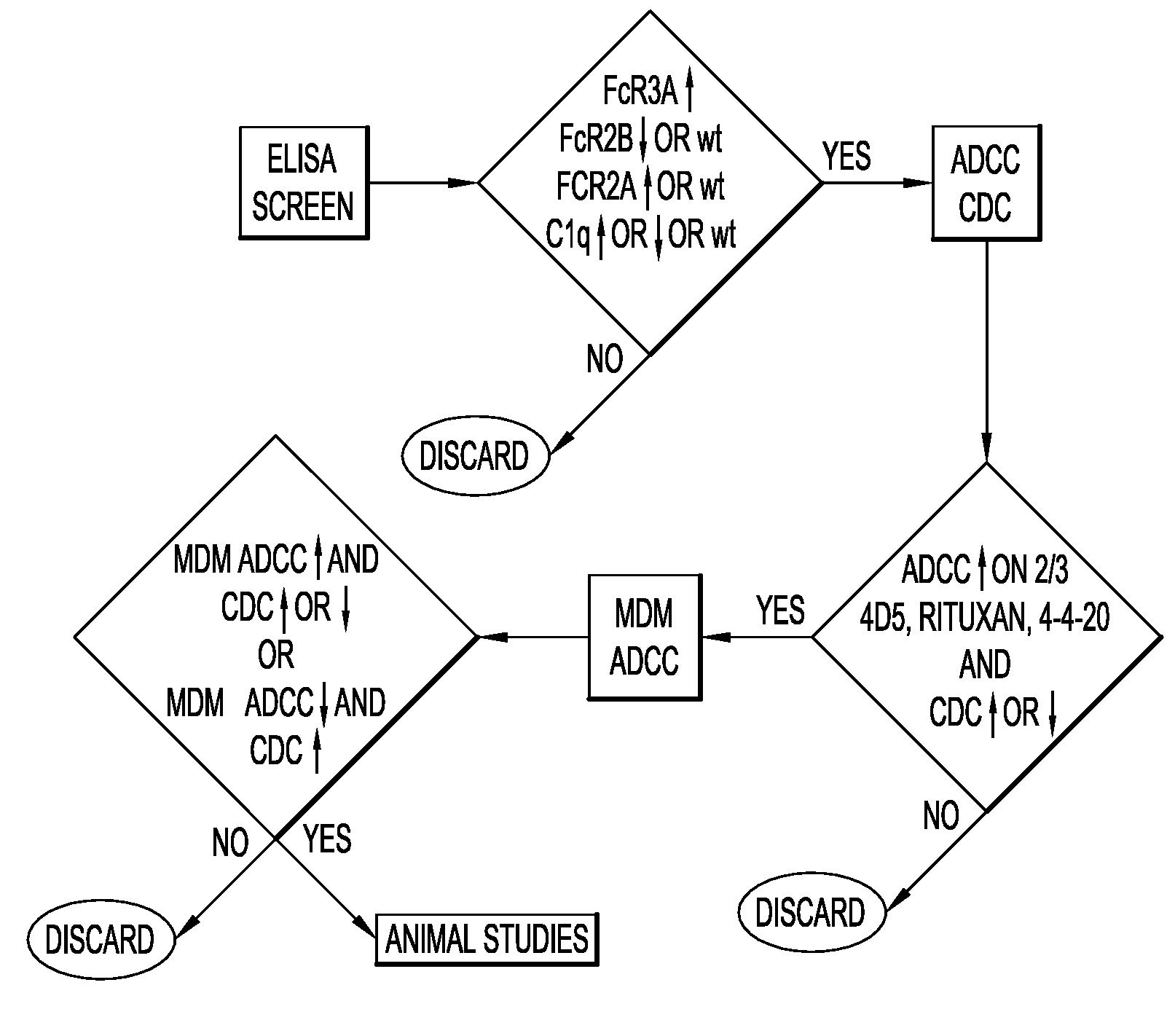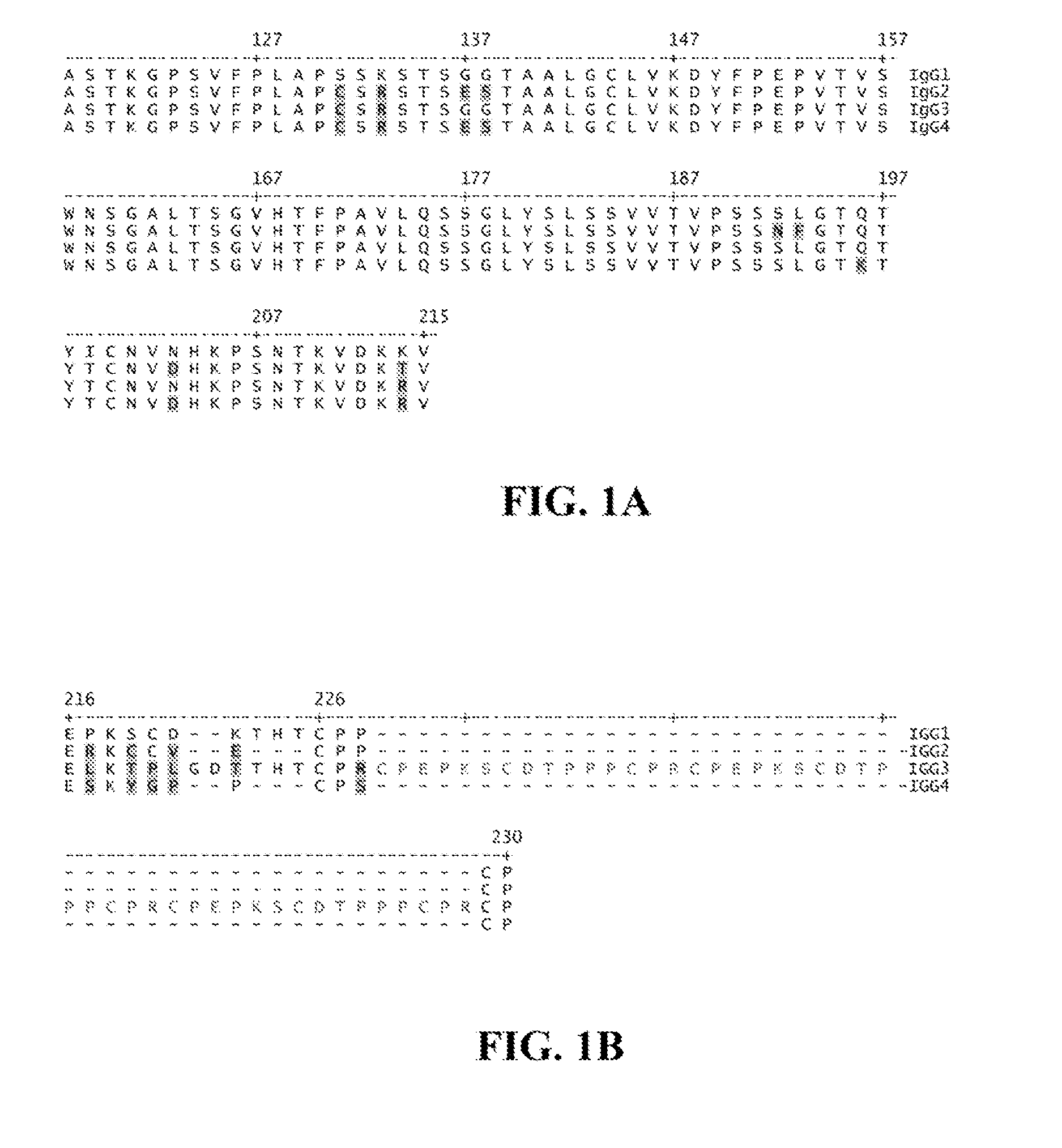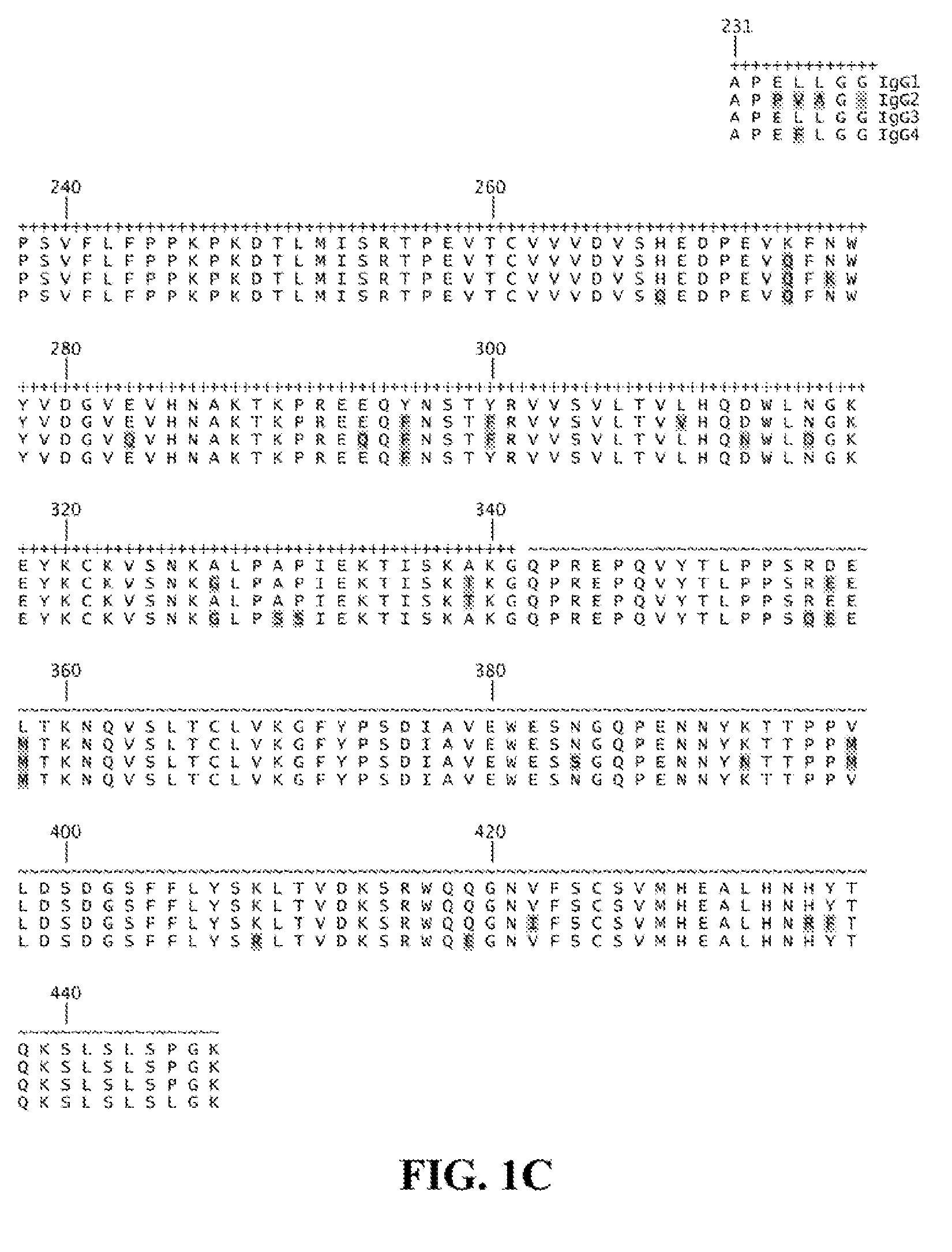Identification and engineering of antibodies with variant heavy chains and methods of using same
a heavy chain and antibody technology, applied in the field of molecules, can solve the problems of limited ability, less destruction, and less activation, and achieve the effect of optimizing the functionality of therapeutic antibodies and affinities for fcr receptors
- Summary
- Abstract
- Description
- Claims
- Application Information
AI Technical Summary
Benefits of technology
Problems solved by technology
Method used
Image
Examples
Embodiment Construction
[0128]The present invention relates to molecules, preferably polypeptides, and more preferably immunoglobulins (e.g., antibodies), comprising a variant heavy chain, wherein said variant heavy chain comprises domains or regions from two or more IgG isotypes. In certain embodiments the invention relates to molecules comprising CH1 and hinge domains of an IgG1 and an Fe region of IgG2, IgG3 or IgG4. The invention further encompasses molecules comprising variant heavy chains having domains or regions from IgG2, IgG3 or IgG4, and one or more amino acid modifications (e.g., substitutions, but also including insertions or deletions) in one or more regions, which modifications alter, e.g., increase or decrease, the affinity of the Fe region of said variant heavy chain for an FcγR. In some embodiments, the invention comprises modifications to the Fe region of the variant heavy chain including but not limited to any of the modifications disclosed in U.S. Pat. No. 7,355,008; U.S. Provisional A...
PUM
| Property | Measurement | Unit |
|---|---|---|
| affinity | aaaaa | aaaaa |
Abstract
Description
Claims
Application Information
 Login to View More
Login to View More - R&D
- Intellectual Property
- Life Sciences
- Materials
- Tech Scout
- Unparalleled Data Quality
- Higher Quality Content
- 60% Fewer Hallucinations
Browse by: Latest US Patents, China's latest patents, Technical Efficacy Thesaurus, Application Domain, Technology Topic, Popular Technical Reports.
© 2025 PatSnap. All rights reserved.Legal|Privacy policy|Modern Slavery Act Transparency Statement|Sitemap|About US| Contact US: help@patsnap.com



